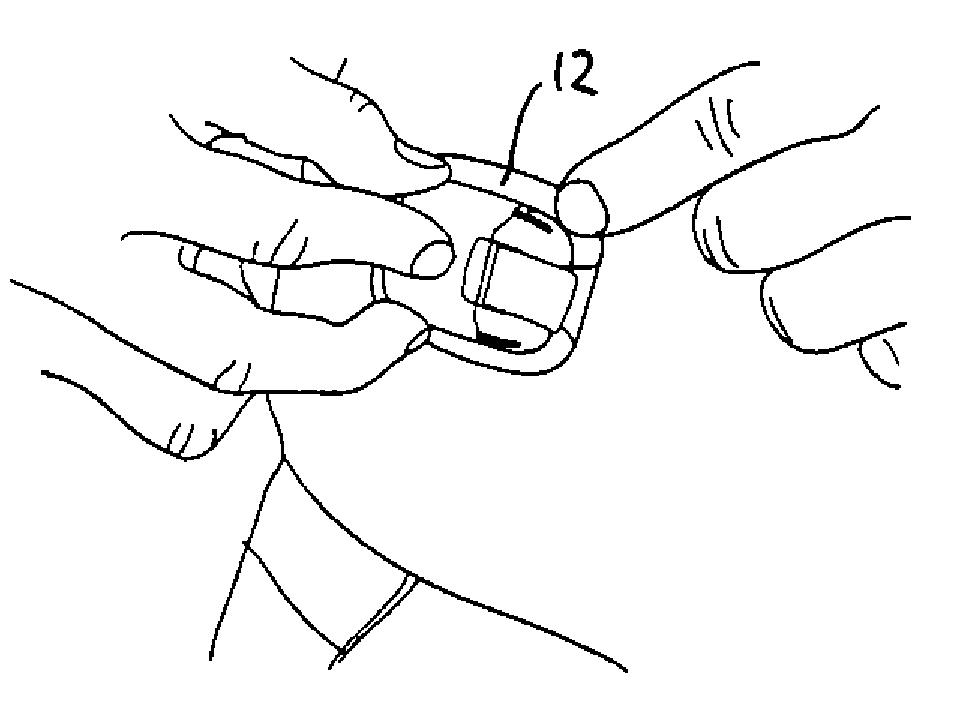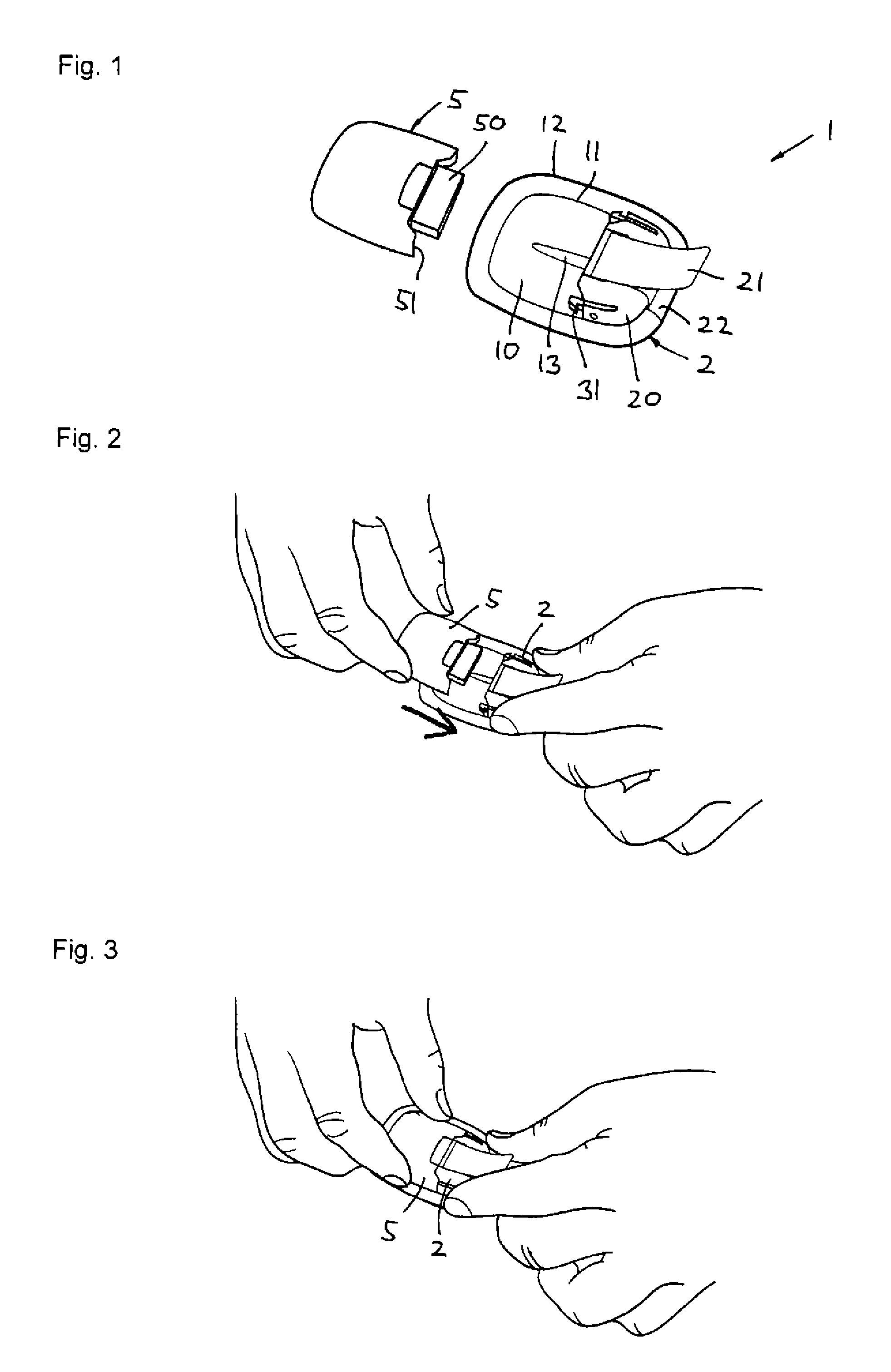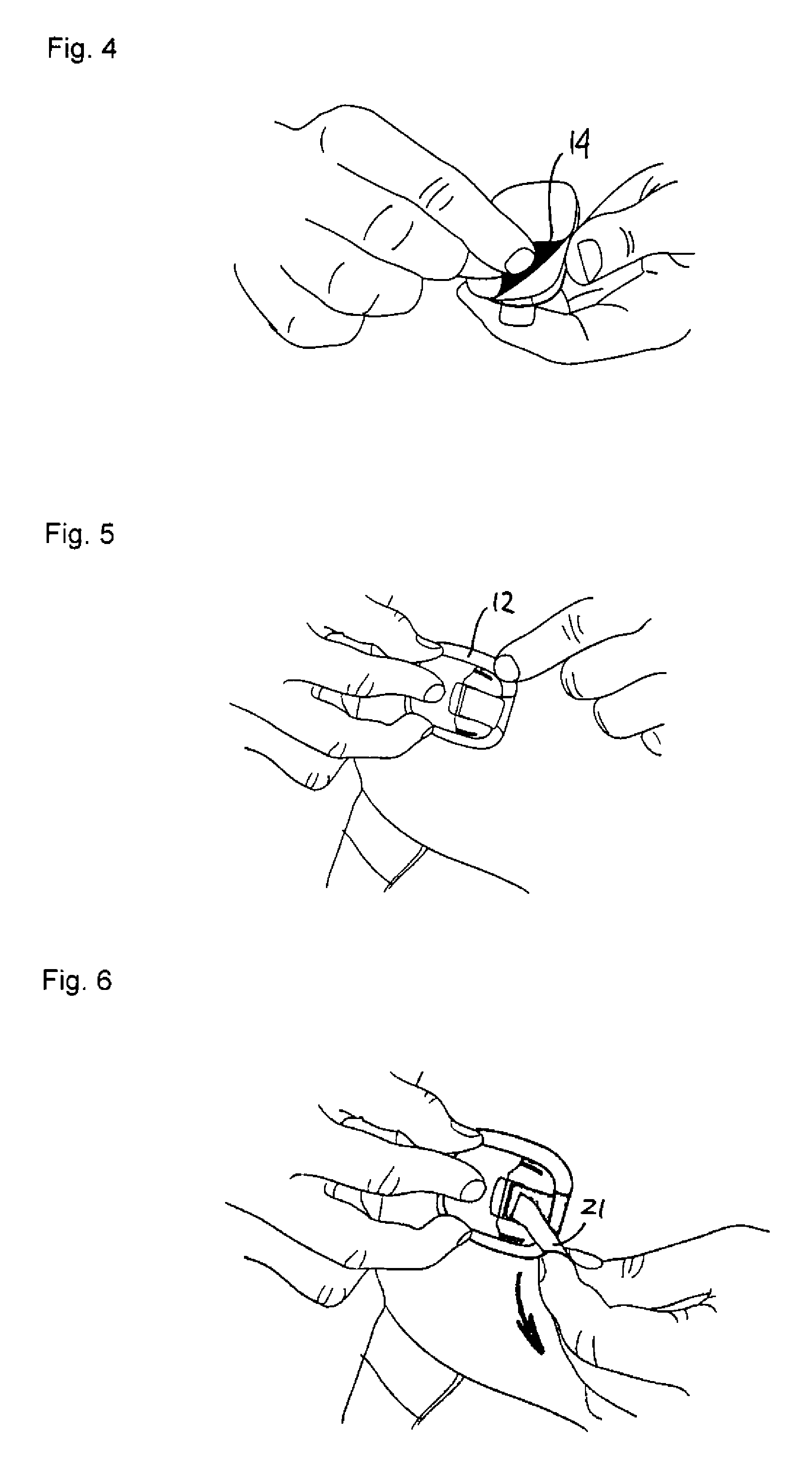Medical Device with Transcutaneous Cannula Device
a technology of cannula and medical device, which is applied in the direction of intravenous devices, catheters, other medical devices, etc., can solve the problems of increasing complexity, affecting the effect of piercing the tissue with the needle, so as to achieve less damage
- Summary
- Abstract
- Description
- Claims
- Application Information
AI Technical Summary
Benefits of technology
Problems solved by technology
Method used
Image
Examples
Embodiment Construction
[0045]When in the following terms as “upper” and “lower”, “right” and “left”, “horizontal” and “vertical” or similar relative expressions are used, these only refer to the appended figures and not to an actual situation of use. The shown figures are schematic representations for which reason the configuration of the different structures as well as there relative dimensions are intended to serve illustrative purposes only.
[0046]Firstly, with reference to FIGS. 1-12 an embodiment of a drug delivery device will be described focusing primarily on the directly user-oriented features. The delivery device is shown as an example of a type of device in which the present invention advantageously may be implemented, however, the described modular delivery can be considered to be “generic” in respect of the transcutaneous device actually used, e.g. a needle or a cannula.
[0047]The transcutaneous device unit 2 comprises a transcutaneous device in the form of a cannula and an associated insertion ...
PUM
 Login to View More
Login to View More Abstract
Description
Claims
Application Information
 Login to View More
Login to View More - R&D
- Intellectual Property
- Life Sciences
- Materials
- Tech Scout
- Unparalleled Data Quality
- Higher Quality Content
- 60% Fewer Hallucinations
Browse by: Latest US Patents, China's latest patents, Technical Efficacy Thesaurus, Application Domain, Technology Topic, Popular Technical Reports.
© 2025 PatSnap. All rights reserved.Legal|Privacy policy|Modern Slavery Act Transparency Statement|Sitemap|About US| Contact US: help@patsnap.com



